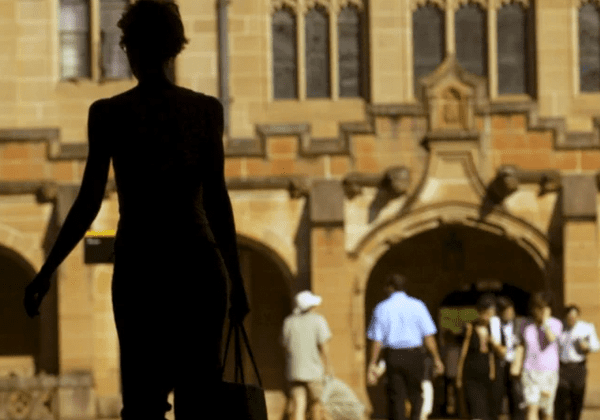With negotiations for a new Enterprise Agreement (EA) commencing this week, the University of Sydney has proposed to shift the balance between research and teaching activities for academic staff.
Under the current model, academic staff are allocated a workload of 40 per cent teaching, 40 percent research, and 20 per cent administration.
This allocation is a protected right under the University’s current Enterprise Agreement, which states that teaching activities cannot exceed 40% of a staff member’s total workload unless otherwise agreed.
However, in a position paper released to staff last Monday, the University expressed its intention to adopt a more “flexible approach” to workload allocation.
“This one size fits all approach is no longer suited to the diversity of our academic staff,” the paper read.
“The proposed approach for the new EA will be to allocate academic work based on the needs of the University and an academic’s skills, competence, expertise, outputs and interests.”
A similar proposal was defeated in the 2013 EA period after extensive strike action.
‘Management wants fewer academic staff doing research’
Many say the proposal foreshadows an attempt to reduce the number of academic staff engaging in research, given the University generates much more income from teaching than research activities.
While income from student fees comprised more than half of the University’s operating revenue in 2020, research and consultancy activities comprised less than 20%.
In an interview with the Sydney Morning Herald last December, former University of Sydney Vice-Chancellor Michael Spence said the current 40:40:20 model was “very expensive” and unsustainable, particularly in light of dwindling levels of international student revenue.
He argued that universities are producing too much ‘incremental’ research, and must rethink the amount of time academics spend away from teaching.
In an interview with Honi, recently-appointed Vice-Chancellor Mark Scott said that research at universities was “chronically underfunded.”
“The research grants that we receive don’t fully cover the cost of research. We’ve used international student income to fund research, and that’s not possible now. So… more conversations [about how we can better support research] need to be held.”
Proposal may create an underclass of casual teaching staff
NTEU President Patrick Brownlee raised concerns about the impact of the proposal on the University’s increasingly casualised workforce, who already face high teaching workloads while being subjected to systemic underpayment and exploitation.
“If [casual staff] want to convert from casual teaching into something more sustainable, [they] will have to demonstrate research ability,” he said.
However, he notes that if casual staff are only offered teaching pathways, they will be forced to pick up a second full-time research workload if they wish to be considered for more secure permanent positions.
”Where is the next generation of [teaching-research academics] going to come from? Maybe those who have a high teaching load by day, and then spend their evenings doing research to prove their mettle?”
“Unfortunately, that doesn’t sound too far from the present reality.”
SRC Education Officer Tom Williams echoed these concerns, saying the University’s proposed changes would “keep research well away from education.”
“It does nothing to end the exploitation of staff and does not address the ridiculous workloads they must fulfil…. [leaving] staff overworked, underpaid and with no long-term security or research prospects.”
“The restructure is clearly an attempt to grab cash through quick and hollow accreditation of students, while star researchers are pulled in to get grants and uphold the university’s research commitments and image. “
Students should be concerned too
Over the past decade, there has been evidence indicating that student learning outcomes are greatly enhanced when engaging with research and research-led teaching.
Brownlee suggests that if the current relationship between research and teaching is removed, it will lead to a further decline in the quality of education.
“I think students would be concerned,” he said. “Students that enrol here should be hoping that they have lecturers who can draw on their areas of inquiry, their passion, their real experience of working on problems.”
“That comes through [academic staff] being able to spend time thinking and reading and investigating; that comes from the exercise of freedom to question.”
SRC Education Officer Madeleine Clark said that the University is on a “war path,” as the new proposal follows mass staff redundancies, ongoing cuts to courses and departments, and other austerity measures.
“Out of all the other cuts however, the [proposal to remove the 40:40:20 model] is the most worrying as it will completely transform how the University will operate — it is a major step towards the corporate degree factory Vice-Chancellors and the government dream of.”
‘Teaching-only’ institutions on the rise
The University’s proposal comes after an influx of teaching-only institutions being registered as new ‘university colleges.’
This includes the National Institute of Dramatic Arts, the Australian Film, Television and Radio School, and Moore Theological College, which were registered last month by the Tertiary Education Quality and Standards Agency.
Education Minister Alan Tudge said that there needs to be more conversations about “how we support greater differentiation and specialisation in the university sector.”
“We have 39 comprehensive universities, which may not be the optimal model today for the quality of teaching or research in this country. We should start that conversation as to how we can think through this together.”
The number of teaching-only institutions is expected to grow in the coming years, which is likely to draw funding away from traditional universities which continue along the teaching and research path.





